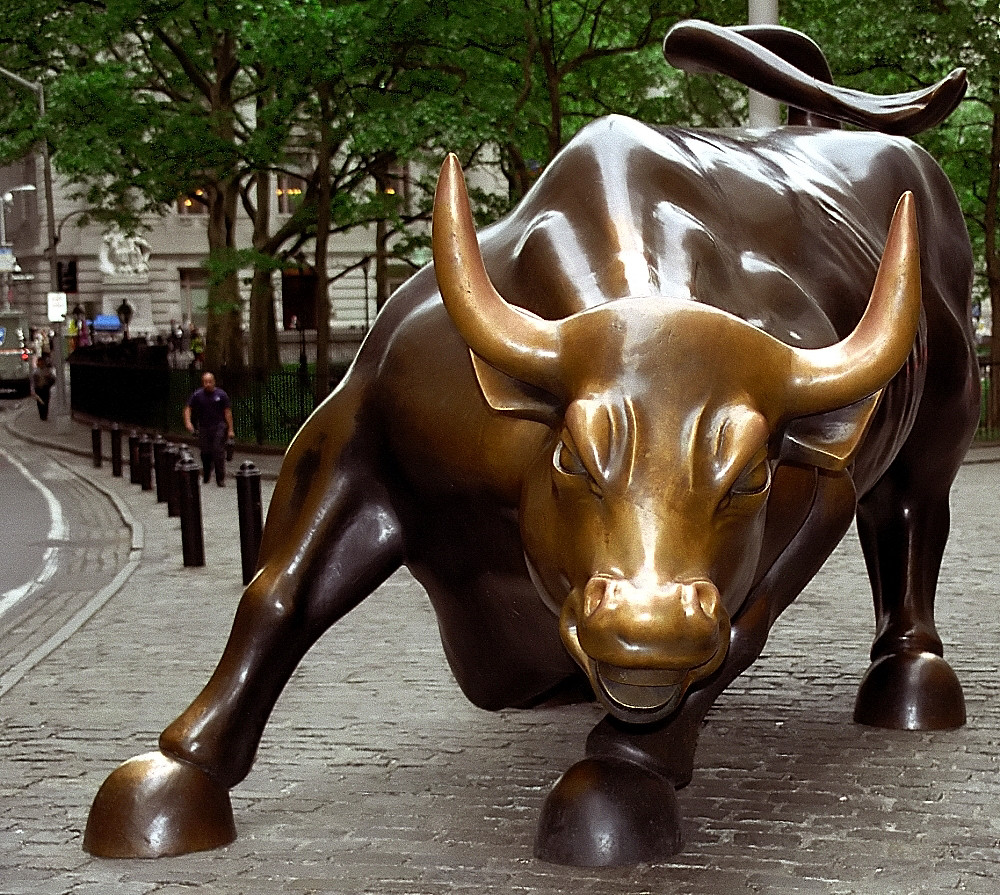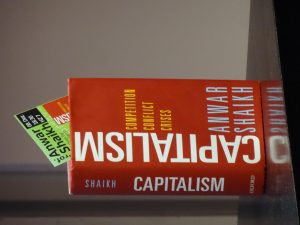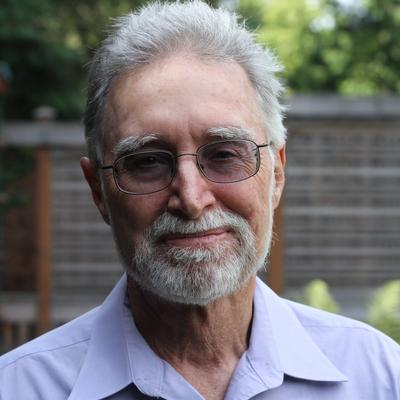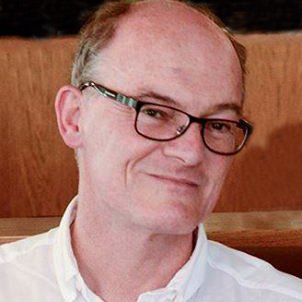Anwar Shaikh’s Classical Theory of Wages and Unemployment
✑ NICK JOHNSON ` ╱ ± 7 minutes
The Phillips curve (inflation rises when unemployment shrinks) broke down in the 1970s. There's an alternative: Shaikh’s Classical curve, in which the conflict between capital and labour is central.
‟In the classical tradition, the conflict between capital and labour is central to capitalism.
The Phillips curve (inflation rises when unemployment shrinks) broke down in the 1970s. There's an alternative: Shaikh’s Classical curve, in which the conflict between capital and labour is central.
From: The Political Economy of Development (5/3/17) ╱ About the author(+)
Nick Johnson has an MSc in development economics from SOAS, University of London, works for a charity, is passionately interested in economics and how it can be used to promote sustainable human progress. His personal blog: The Political Economy of Development. On twitter: @nickj_econ.
Anwar Shaikh is a Professor of economics at the New School for Social Research in New York. His ideas, in his own words, draw mainly but not exclusively on the ‘Classical tradition’ of Smith, Ricardo and Marx. Marx himself was a critic of classical political economy, so in some ways Marxist political economy could be considered as a separate school of thought.
In Shaikh’s 2016 magnum opus, Capitalism, he also draws on Keynes and Kalecki, two economists who greatly inspired the post-Keynesian school. For Shaikh, the Keynesian/Kaleckian emphasis on aggregate demand remains important, but so too does aggregate supply, which is emphasised in mainstream neo-classical economics. According to Shaikh, the classical tradition is not so much demand-side, or supply-side, but ‘profit-side’. The rate of profit is central to his work, and it affects both demand and supply in the capitalist economy.
In this post I want to outline Shaikh’s theory of wages and unemployment, which is covered in Chapter 14 of Capitalism. He covers a great deal of theoretical and empirical ground in the book, not least in this chapter, and it makes for stimulating reading. To avoid making this post too long, I will focus on Shaikh’s own particular theory, rather than spending much time comparing it to alternative theories, which Shaikh does in the book.
Shaikh’s theory of wages and unemployment gives rise to his Classical curve, which can be compared to the traditional Phillips curve. The latter posited a negative relationship between wage inflation (or price inflation) and unemployment. In the post-war boom of the 1950s and 60s in the advanced capitalist world, policymakers thought that they could only reduce the level of unemployment through a stimulus to aggregate demand at the cost of higher wage inflation. In the 1970s, this relationship appeared to break down, as both inflation and unemployment rose together as growth slowed, giving rise to what is called ‘stagflation’.
Shaikh’s theory is different to the original Phillips curve, but he also rejects the monetarist and new classical ‘natural rate of unemployment’ (NRU). The author’s classical curve is a relationship between the rate of change of the wage share in output, and unemployment ‘intensity’. Unemployment intensity is the product of the duration and the rate of unemployment, which perhaps gives a more accurate picture of the effect of labour market slack on wages. The relationship is a negative one for a given degree of bargaining power of labour. Thus, given the latter, a fall in unemployment will tend to raise the rate of change of the wage share.
Key to Shaikh’s classical theory is that there is a rate of involuntary unemployment that is normal for the economy and which exceeds full employment. This idea draws on Marx’s theory of the reserve army of labour. Faster economic growth may reduce unemployment for a time, but there are forces acting to bring it back up to the normal rate over the longer run. A tighter labour market will tend to raise the wage share and reduce profitability. This will reduce investment and growth, thereby raising unemployment once more. Profits will then rise in response, leading once again to higher investment, output and employment. This produces a cyclical pattern.
For Shaikh, labour supply and productivity growth are also partially endogenous (determined within the system). Thus faster economic growth may lead to a tighter labour market, with increased pressure for wage increases. There will then be pressure to increase the size of the labour force through a higher participation rate from the current population or from increased immigration. Firms may also respond to a tighter labour market by increasing productivity by working employees harder or investing in new technology.
Movements up and down the classical curve, as unemployment rises and falls amidst struggles between capital and labour over wages and profits, can take many years, and Shaikh demonstrates this empirically for the post-war period. But the curve can also shift, if the relative strength of labour for a given rate of unemployment intensity changes. This happened in the 1980s, particularly in the US and UK, as right wing governments intervened to weaken the power of labour in an attempt to restore business profits. This development shifted the classical curve down, so that a stable wage share became consistent with a lower normal rate of unemployment.
To reiterate, the classical relationship between wages and unemployment gives rise to a fluctuating reserve army of the unemployed. This surplus labour is involuntary: it is created by the system against the wishes of workers, rather than reflecting their preference for more leisure time, which is a potential outcome of new classical theory!
Economic policy can change the dynamics of the relationships described above, but within limits. Keynesian policies which expand demand can reduce unemployment, at least for a time. The longer term outcome will depend on the effects of any set of policies on profitability.
A sustained boost to demand may therefore reduce unemployment, but if this ultimately leads to a fall in the rate of profit due to an increase in the wage share, growth will eventually slow and unemployment will rise once again towards the normal rate. But Shaikh’s classical theory can give rise to complex dynamics: policy can impact labour force and productivity growth, so that employment can rise and unemployment fall, even while the rate of profit rises due to faster productivity growth as an outcome of, say, a successful industrial policy. The workforce as a whole could gain from higher wages and employment even as profits rise. The classical curve could also shift down via a capital-labour accord (an incomes policy), rather than one-sided legislative attacks on workers a la Thatcher. The key for policymakers is to channel the economic forces which constrain the systemic dynamics, in order to achieve socially beneficial outcomes.
Also see Nick Johnon's other article on Anwar Shaikh's economics: Modern Monetary Theory and Inflation – Anwar Shaikh’s Critique
 |
| Reviews, lectures & more here. |
In this post I want to outline Shaikh’s theory of wages and unemployment, which is covered in Chapter 14 of Capitalism. He covers a great deal of theoretical and empirical ground in the book, not least in this chapter, and it makes for stimulating reading. To avoid making this post too long, I will focus on Shaikh’s own particular theory, rather than spending much time comparing it to alternative theories, which Shaikh does in the book.
Shaikh’s theory of wages and unemployment gives rise to his Classical curve, which can be compared to the traditional Phillips curve. The latter posited a negative relationship between wage inflation (or price inflation) and unemployment. In the post-war boom of the 1950s and 60s in the advanced capitalist world, policymakers thought that they could only reduce the level of unemployment through a stimulus to aggregate demand at the cost of higher wage inflation. In the 1970s, this relationship appeared to break down, as both inflation and unemployment rose together as growth slowed, giving rise to what is called ‘stagflation’.
Shaikh’s theory is different to the original Phillips curve, but he also rejects the monetarist and new classical ‘natural rate of unemployment’ (NRU). The author’s classical curve is a relationship between the rate of change of the wage share in output, and unemployment ‘intensity’. Unemployment intensity is the product of the duration and the rate of unemployment, which perhaps gives a more accurate picture of the effect of labour market slack on wages. The relationship is a negative one for a given degree of bargaining power of labour. Thus, given the latter, a fall in unemployment will tend to raise the rate of change of the wage share.
‟A fall in unemployment will tend to raise the rate of change of the wage share.If all income from production is divided into wages and profits, a rise in real wages relative to productivity will raise the wage share and reduce the profit share. In the classical tradition, the conflict between capital and labour over the division of value added in production is central to capitalism. This gives rise to pressure from ‘above’ from capital to increase the profit share and reduce the wage share, and pressure from ‘below’ from labour to increase the wage share and reduce the profit share. This struggle is not just economic; it has a social, political and institutional element. In classical economics, the real wage of workers also has a social and historical component. In addition, the state has a role to play in the wage bargaining framework, which was seen quite dramatically in the UK in the 1980s, as trade unions and worker protections were deliberately weakened through government policies.
Key to Shaikh’s classical theory is that there is a rate of involuntary unemployment that is normal for the economy and which exceeds full employment. This idea draws on Marx’s theory of the reserve army of labour. Faster economic growth may reduce unemployment for a time, but there are forces acting to bring it back up to the normal rate over the longer run. A tighter labour market will tend to raise the wage share and reduce profitability. This will reduce investment and growth, thereby raising unemployment once more. Profits will then rise in response, leading once again to higher investment, output and employment. This produces a cyclical pattern.
For Shaikh, labour supply and productivity growth are also partially endogenous (determined within the system). Thus faster economic growth may lead to a tighter labour market, with increased pressure for wage increases. There will then be pressure to increase the size of the labour force through a higher participation rate from the current population or from increased immigration. Firms may also respond to a tighter labour market by increasing productivity by working employees harder or investing in new technology.
Movements up and down the classical curve, as unemployment rises and falls amidst struggles between capital and labour over wages and profits, can take many years, and Shaikh demonstrates this empirically for the post-war period. But the curve can also shift, if the relative strength of labour for a given rate of unemployment intensity changes. This happened in the 1980s, particularly in the US and UK, as right wing governments intervened to weaken the power of labour in an attempt to restore business profits. This development shifted the classical curve down, so that a stable wage share became consistent with a lower normal rate of unemployment.
To reiterate, the classical relationship between wages and unemployment gives rise to a fluctuating reserve army of the unemployed. This surplus labour is involuntary: it is created by the system against the wishes of workers, rather than reflecting their preference for more leisure time, which is a potential outcome of new classical theory!
‟This surplus labour is involuntary: it is created by the system against the wishes of workers, rather than reflecting their preference for more leisure time, which is a potential outcome of new classical theory!In the classical theory described here, involuntary unemployment is created by what Shaikh calls real competition, which is in contrast to the mainstream concepts of perfect or even imperfect competition. The implication of the latter is that the removal of so-called market imperfections will increase efficiency and reduce unemployment by making the market conform to a theoretical perfect ideal. Real competition gives rise to fluctuations of unemployment around the normal rate, which will not in general correspond to full employment, even with flexible wages in the labour market. These patterns can take many years to play out in a capitalist economy. All this is in marked contrast to both neo-classical and Keynesian theory and is closer to Marx’s theory of the reserve army, the dynamics of which are described in Volume I of Capital.
Economic policy can change the dynamics of the relationships described above, but within limits. Keynesian policies which expand demand can reduce unemployment, at least for a time. The longer term outcome will depend on the effects of any set of policies on profitability.
A sustained boost to demand may therefore reduce unemployment, but if this ultimately leads to a fall in the rate of profit due to an increase in the wage share, growth will eventually slow and unemployment will rise once again towards the normal rate. But Shaikh’s classical theory can give rise to complex dynamics: policy can impact labour force and productivity growth, so that employment can rise and unemployment fall, even while the rate of profit rises due to faster productivity growth as an outcome of, say, a successful industrial policy. The workforce as a whole could gain from higher wages and employment even as profits rise. The classical curve could also shift down via a capital-labour accord (an incomes policy), rather than one-sided legislative attacks on workers a la Thatcher. The key for policymakers is to channel the economic forces which constrain the systemic dynamics, in order to achieve socially beneficial outcomes.
Also see Nick Johnon's other article on Anwar Shaikh's economics: Modern Monetary Theory and Inflation – Anwar Shaikh’s Critique


























Comments
Post a Comment
Your thoughts...